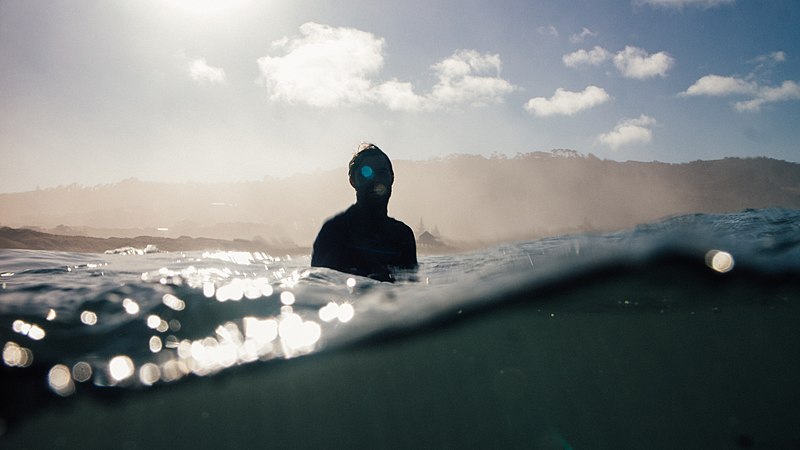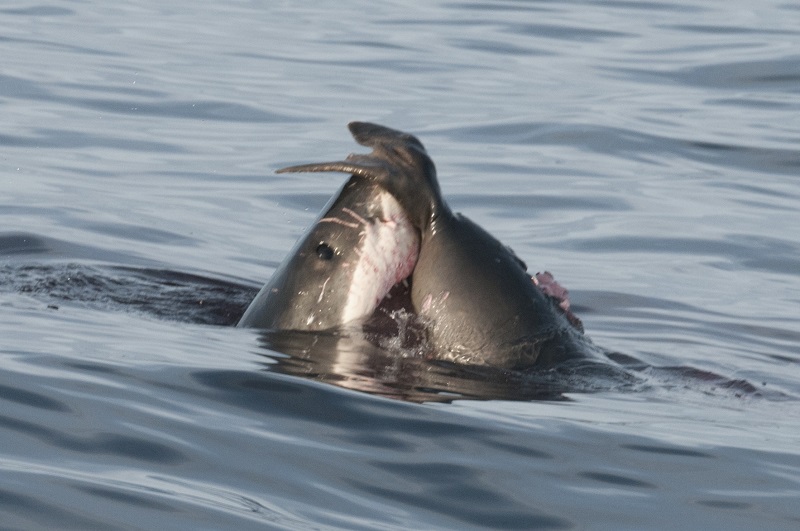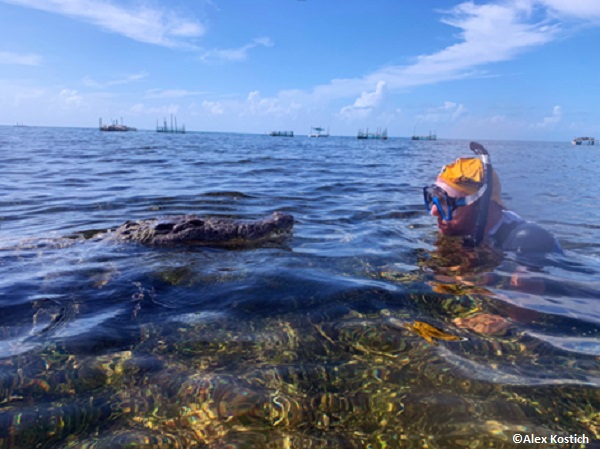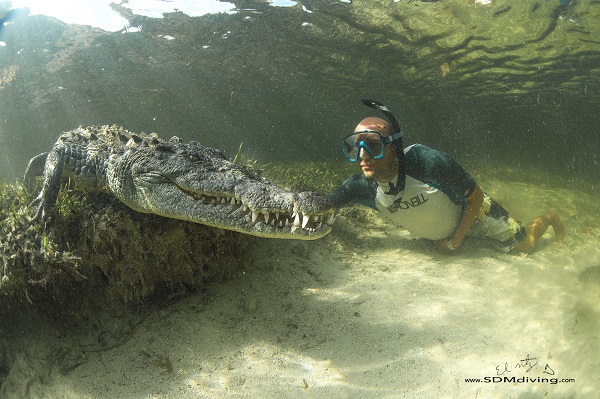
Surfing is a symbol of the casual life at the ocean, thus the saying “Life’s a beach.” Although it was not invented in California, it was made famous here. In the 1950s, the Americans had more free time, the gasoline was cheaper and so they spent more and more time on the beach.
The surf boom found its climax in the midst of freedom-seeking youth. The commercialization of a subculture was the result of the popularization of surfing. Only by the increased free time of the working population due to the industrialization, and the related development of the diving and surfing sport at that time also increased shark attacks numbers.
Shark attacks on surfers are—if the shark hunts on sight—a confusion of the surfer with his main prey, the seals, since their silhouettes are very similar from below. Divers can see the sharks underwater. But what about swimmers, surfers or kayakers?
Surfers or swimmers do not usually see the shark. And even in case you see it, it has been there for a long time under the waters surface. Usually, a shark approaches from below. This represents the superior position.
One question may still arise: According to Sharkproject, a German organization dedicated to the conservation of sharks, about 15 billion people a year dive, swim and surf. So why do accidents often happen to surfers?
To answer this question, one must first deal with the formation of waves. Surfers love to use big waves. A prerequisite for this, however, is that it must be deep off the coast or the reef. Large sharks usually live in deeper waters, though not exclusively.
How do surfers move? They hit the surface of the water with their hands as they swim out, creating a sound underwater that corresponds to that of a dying fish. This can attract sharks.
Could surfers react? No, as long as they do not see the shark. Thus, they have no chance to interact, or to communicate with the shark with body language.
What does a shark do if it does not know exactly what kind of object it is dealing with?
It will try to find out with its sensory organs what it is. One of these is the sense of touch or a careful bite to check whether the creature tastes good.. The shark, for example, touches the potential prey with the snout and awaits a reaction.
Humans create a maximum bite pressure of about 60 kilograms per square centimeter. Extrapolations by Dr. Stephen Wroe estimated a white shark with a weight of 200 to 400 kg has a biting force of 3,000 to 5,000 Newton, which corresponds to 300 to 500 kg. Further, a 3.5 ton Great White Shark could apply a maximum biting force of 18000 Newton (equivalent to 1800 kg).
These calculations are based on a theoretical model, which calculates the biting force with the help of jaw and muscles. Nevertheless, these are the top values that could not be detected so far, as sharks do not always bite with full force.
If one considers the biting behavior of sharks on unknown prey (for example a bait basket), it is notable that they are very careful at first and perform an almost gentle test bite. The exact force of such a test bite depends on the size, interest and personality of the animal and, therefore, cannot be accurately quantified. But just imagine the serrated, pointy teeth of a big white shark.

Because their teeth are very sharp, they can cause serious injury even if it takes only a cautious bite. In the worst case, the shark can injure an artery which can lead to death. The fact is, sharks do not care for humans because we simply do not taste good to them because we are boney and not high in fat or blubber.
Proponents of mistaken identity theory argue as follows:
It is well known that surfers use the floating motion to cover a frequency range that is very similar to that of a dying fish or the movement of a seal on the surface of the water. As the sound in the water spreads much faster than on land, the shark first reacts to it. The next sense that sharks use in hunting would be the sense of smell. Since this is not usually stimulated by surfers, seeing comes to the fore.
The silhouette of a surfer looks like a seal or a sea lion when viewed from below. In addition, both the sidelines (pressure-sensitive organ) and ampullae of Lorenzini (the electrical sense of sharks) are stimulated by the surfer. In addition, the surfer moves much slower than do seals and does not react normally to the shark (since he does not see him).
This speaks from the animal’s point of view for an injured or old seal. Either way, it’s easy prey. It is only logical that the shark confuses the surfer with a seal because of the similarity to its usual prey, which leads to an attack. Even if this is just a test bite, a fraction of the maximum bite force and limbs suffice to sever or injure arteries. However, until the shark realizes that it is not a seal or something similar, it is already too late to prevent a possible life-threatening injury.
The opponents of this theory can argue as follows:
Sharks have known for millennia exactly what they eat, and have a corresponding prey scheme. If they have something in front of them which could represent potential prey, but the shark does not know it, he behaves very carefully.
Two shark biologists Dr. Erich Ritter, University of West Florida, and Alexandra Quester, University of Vienna, showed great white sharks apparently do not mistake surfers for seals but primarily grab and bite a surfer or the board to further examine what the surfer or object could be.
Close to 70 incidents from the Western U.S. coast of California and Oregon that occurred between 1966 and 2015 were evaluated, primarily focusing on the determination of the involved shark’s length, as well as the level of damage done to the surfer and board.
Should the mistaken identity theory be correct, the minimal size (length) of white sharks attacking pinnipeds (seals, sea lions, etc.) would be identical to the ones biting surfers. Additionally, the wound severity would also be identical between pinnipeds and surfers (boards and bodies).
Pinnipeds are very agile animals and it takes great skill for white sharks to run them down. Such can’t be accomplished by young white sharks thus the minimum size of white sharks successfully attacking pinnipeds is around 4m. Furthermore, due to the agility of these mammals, the initial bite of a shark is massive to prevent escape.
The surfer-biting sharks show a much smaller size causing primarily superficial bites. Those bites would not suffice to incapacitate a pinniped if the shark would have made a mistake. Likewise, these sharks are also too small to have the capability of catching these pinnipeds in the first place.
Because of these results, it could be stated that white sharks biting surfers due to a mistake is inaccurate. Should more than one bite occur, the motivation may still be of exploratory nature but could also reflect target practice, play behavior or pattern compensation where the initial reaction of the surfer led to a follow-up bite.
Could the shark attacks in California simply fall under the mistaken identity theory? Or is it more likely the sharks are learning how to hunt and understand their environment? Maybe we should ask the sharks?
![]()
Christian Kemper is a TV journalist from Germany. He has been diving with and studying sharks for more than 20 years. He has written two books about shark attacks and one book about crocodiles. He is a freelance writer for 3 of the biggest diving magazines in Germany.
You can find his German Language book Strange Pool Friends on Amazon and at tredition.
He has also written a three part article about how cage diving with great white sharks began.


